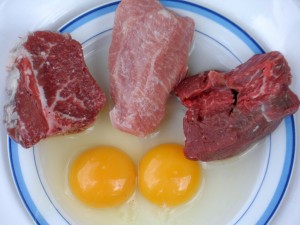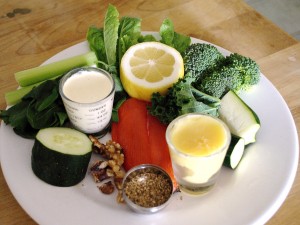ASEK Diet Protocol
ASEK diet protocol based on medical ketogenic ratio is available to health care professionals by contacting Dr Alan W.C. Yuen, Department of Clinical and Experimental Epilepsy, UCL Institute of Neurology, London, UK. email hidden; JavaScript is required
FAT AND PROTEIN
Daily allowances of calories, fat and protein are calculated to meet individual needs.
Fat satisfies ~70% – ~80% of the daily energy requirement. Protein is calculated to satisfy at least 100% of the daily energy requirement. Fat intake may be reduced to allow for increased protein intake without changing the daily intake of calories. Protein, however, is regulated to avoid the burden of acidosis from increased net endogenous acid production (NEAP).
Allowed Fats
Allowed fats are ghee (100% calories from fat), dairy cream (90% calories from fat) and “crème fraîche” (100% calories from fat).
Allowed Proteins
- Meat: Pasture-fed beef, lamb, and farm-raised pork. Visible fat is trimmed. Choices are rotated.
- Fish: Fresh, wild, and varied to minimize the risk of heavy metal contamination. Choices are rotated.
- Eggs: Organic eggs from free-range hens. If allergic to egg white protein, substitute a mixture of fish and egg yolk. Egg yolk, a superior source of nutrients for the brain, should not be eliminated unless absolutely necessary.
FIXED CARBOHYDRATE UNIT
The fixed carbohydrate unit for each of three meals consists of 1 measuring cup cooked vegetables and 1 measuring cup raw vegetables seasoned with a citrate-sodium chloride-iodine-mineral condiment.
Rotating vegetable choices diminishes intake of plant toxins and anti-nutrients that may result from over consumption of a particular plant; and provides a greater variety of vitamins, minerals, phytonutrients and fiber that complement nutrient-dense high-energy fats and proteins. Mineral-rich bicarbonate precursors buffer acids, thereby reducing the risk of kidney stones and bone loss associated with the chronic low-grade acidosis of hyperketonemia.
See: www.invitehealth.com/media/pdf/independent-article-sodium-and-potassium.pdf Curtis Morris C et al., “Relationship and Interaction between Sodium and Potassium” J Am Coll Nutr, vol. 25, no. 3, 262S-270S (2006)COOKED MIXED VEGETABLES
Artichoke, asparagus, bok choy (Chinese cabbage) and baby bok choy, broccoli and baby broccoli (broccolini), chards, green pepper, kale, leeks, romanesco cauliflower, snow peas, spinach, zucchini squash. Chives and sprigs of fresh basil, oregano, tarragon, marjoram, and thyme may be added.
RAW MIXED VEGETABLES
Arugula (roquette), celery, cucumber, daikon radish (white radish), green bell pepper, green onion (scallions), pickles (artisanal fermented in salt), romaine and other lettuce varieties and salad greens, sauerkraut (artisanal fermented in salt), watercress. Sprigs of fresh parsley, cilantro (coriander), and chives may be added.
SEASONING
Seasoning for each meal consists of 6 g (2 teaspoons) “Eden Organic Seaweed Gomasio” (organic sesame seeds, sea-salt, and sea vegetables); the freshly squeezed juice and pulp of one third lime or lemon; two walnuts and two almonds (pulverized in the meals of young children to avoid choking).
“Eden Seaweed Gomasio” (see below) contains nori, kombu, and dulse. It is prepared on equipment that handles tree nuts, and the dulse may contain trace amounts of crustacean shellfish. For patients with allergies, Gomasio may be prepared from bulk ingredients.
MEAL PREPARATION
Meals are prepared as an homogeneous solid or liquid, and are taken at evenly spaced intervals. Vegetables to be cooked are chopped, and added to the fat/protein portion for minimal stove-top cooking at low heat in stainless steel or glass cookware. Raw vegetables mixed with ASEK seasoning are added to the cooked portion upon serving. Nuts should be soaked over-night. If raw vegetables are not tolerated, they should be cooked, strained and consumed as broths, soups, or drinks. The cream portion may be included in a sauce, soup or stew, or diluted with mineral water as a drink, or whipped as a cream or frozen dessert. If the diet is calibrated to caloric requirement, there should be no regular leftovers and no hunger beween meals.
ADDITIONAL FOODS
When the diet has achieved its therapeutic goal, one extra food choice per meal may be tried.
- 2 olives
- 1 Brazil nut
- 6 pine (pignolia) nuts
- 2 macadamia nuts
- 1 teaspoon fish roe (caviar or other fish eggs)
- 1 tablespoon bone marrow
- 2 strips additive-free bacon
- 1 half chicken liver
- 1 small avocado (small)
- 1 kiwi fruit
- 1 tsp pure carob powder added to allowed cream
BEVERAGES
Mineral water preferably high in calcium and magnesium, low in sodium and fluoride, served plain or with lemon or lime.
Hot or cold infusions:
- Tulsi tea/holy basil (ocimum tenuiflorum); hot mineral water flavored with fresh ginger or fresh lemon.
- Vegetable or meat broth (prepared with added bones) prepared from allowed foods and mineral water.
- Heavy cream “shake” prepared from 40% heavy cream diluted with mineral water and flavored with 1 teaspoon pure vanilla extract (preserved in glycerine/glycerol).
Extremes of over- and under-hydration must be avoided.
NUTRITIONAL SUPPLEMENTS
Magnesium is lacking in the diets of industrialized nations, and blood tests do not measure levels of intracellular magnesium. If constipation is chronic and there is no kidney disease, magnesium citrate to bowel tolerance is recommended. Conversely, supplemental calcium, a competitive inhibitor of magnesium, contributes to magnesium deficiency, further upsetting the metabolic balance of calcium and magnesium.
Most biologic processes have a U-shaped dose response. Nutritional supplements may contribute to imbalances that lead to adverse effects. Unless required to treat diagnosed deficiencies, nutritional supplements should be avoided.
COMMENTS and CAVEATS
Specific fatty acid/high-normal ketone body metabolism targeted by ASEK diet may compensate for the defects in mitochondrial energy transduction associated with insulin deficiency, as well as primary mitochondrial impairments (see Sato K. et al. Insulin, Ketone bodies, and mitochondrial transduction. FASEB J 1995 May; 9(8):651-8). While ASEK diet provides nutrition that may be superior for support of mitochondrial and peroxisomal beta-oxidation, drugs toxic to mitochondria and peroxisomes may sabotage dietary treatment. Unless absolutely necessary and in accordance with medical advice, drugs that interfere with mitochondrial and peroxisomal function should be avoided. A list of inhibitors is provided – – see “Additional Management Considerations” (below).
Some commercial ghee products differ from traditional classic ghee in composition and preparation. Only artisanal ghee (100% dairy fat) clarified from the unadulterated butter of pasture-fed cows is allowed. Ghee is not allergenic, and does not require refrigeration. Combined with wild fish, eggs from free ranging hens, the meat of traditionally raised pastured animals, and the organic vegetable content of the diet, balanced fat soluble vitamins, A,D,E and K, choline, inositol, phosphatidylcholine , phosphatidylserine, conjugated linoleic acid, and antioxidants support efficient metabolism. Ghee spares metabolic energy by providing pre-formed short chain and medium chain fatty acids that directly enter the portal vein for more rapid absorption. These include butyric acid, a preferred substrate for intestinal flora with antineoplastic (anti-cancer) properties; lauric and caprylic acids, which are antimicrobial and anti-fungal agents; and long chain fatty acids that, in addition to the fatty acids of eggs, fish, meat, green vegetables, seeds and nuts, provide w-6 and w-3 in proportions of arachidonate, DHA and EPA ccomparable to those of human milk.
MANAGEMENT GUIDELINES
-
Rule out disorders of fatty acid metabolism.
-
Check for food allergies and intolerances, and ensure that clarified butter (ghee) and egg yolk are tolerated.
-
Subsitution of fat for starch and sugar should be gradual. People who are over-weight should lower intake of ghee and cream as stored body fat is released and metabolized during weight loss.
-
Check that the RDA for protein is met.
-
Fine-tuning is necessary to achieve ideal weight and optimal blood ketone body level (euketonemia).
Parameters of maintenance of the bicarbonate concentration/CO2 content/anion gap, in the middle of normal range:
-
Beta-hydroxybutyrate concentration (in the high normal region i.e. around 0.3mmol/L)
-
Free carnitine (ideally no lower than mid normal range)
-
Fasting glucose (ideally below 4.5 mmol/L)
-
Fasting triglycerides (ideally lower than 1 mmol/L)
-
Fasting lipids (ideally high HDL ~ 2 mmol/L, desirable low CHO:HDL ratio ~ 3)
Acidosis, ketosis and high triglycerides suggest impaired beta-oxidation/mitochondrial function – it would be worth a trial of carnitine even if carnitine levels are normal, and search for potential inhibitors of mitochondrial function (see below). People on valproate may require supplemental carnitine.
It is important to check metabolic and lipid screens to ensure all analytes are within the normal range. It is thought that the potassium normal range may be too wide; ideally, potassium should be at least 4 meq/L.
ADDITIONAL MANAGEMENT CONSIDERATIONS
Avoid whenever possible mitochondrial inhibitors
Corticosteroids, valproic acid, phenytoin, barbiturates, halothane, isoflurane, sevoflurane, bupivacain, articain, fibrates, statins, biguanides, thiazolidinediones, amiodarones, beta-blockers, haloperidol, chlorpromazine, quetiapine, risperidone, chloramphenicol, tetracyclines, aminoglycosides, zidovudine, carboplatin, doxorubin, ifosamide, interferon, acetyl-salicylate acid, ibuprofen, acetaminophen, diclofenac.
Heavy metals, fluoride, chlorine, pesticides.
Also, felbamate, propofol, and pivalate-conjugated drugs, notably antibiotics.
Note: Continue on above medications according to medical advice ; however, if there is a choice to switch, then avoid the ones above. Also carbonic anhydrase inhibitors (acetazolamide, topiramate, zonisamide) contribute to acidosis, and are best avoided if possible. If there is a choice, opt for the newer non-enzyme inducing anti-epilepsy drugs (AEDs.
Avoid trans-dermal and inhaled toxins
Cyanide (cigarette smoke), VOC (volatile organic compounds, found in many houses – new carpets, paints, sprays etc.); toxic ingredients in toiletries, cosmetics and cleaning products; phthalates in plastic containers may leach estrogen analogs.
Explore need for adjunctive neurosteroid therapy
Seizure onset and exacerbation associated with puberty have been well documented. There is evidence that estrogens lower, and allopregnanolone, a metabolite of progesterone, raises many seizure thresholds (6;7). ASEK diet avoids foods that contain estrogen analogs. Particularly in adolescent girls and women with epilepsy, but also in boys and men, endocrine function may produce clinically important consequences.
Avoid common seizure triggers
These include stress, lack of sleep, and intermittent photic stimulation. ASEK diet has been formulated to exclude dietary components with pro-convulsant properties while including those with anti-convulsant properties.
Work on creating healthy lifestyle habits
Implement daily routines of enjoyable physical exercise and exposure to fresh air and morning sunshine. ASEK diet is best implemented as part of an integrative program that fully supports mental and physical health.
REPORTING
Dr Alan W.C. Yuen would be grateful for qualified health care providers using ASEK with their patients/clients, to report the following minimal information at 6 months on full diet or on stopping, whichever occurs first.
email hidden; JavaScript is required
Subjects sex… age…
Epilepsy syndrome:
MRI/CT scan findings:
No of years on other ketogenic diet:
Seizure frequency/month prior to starting ASEK:
Adverse experiences on ASEK:
Seizure frequency/month (first 6 months on full ASEK):
If ASEK stopped, the reasons:
Other comments:
The above is intended for informational purposes only. Informed weighing of risk versus benefit requires consultation with health care providers when decisions to take, discontinue, or substitute drugs are under consideration.

